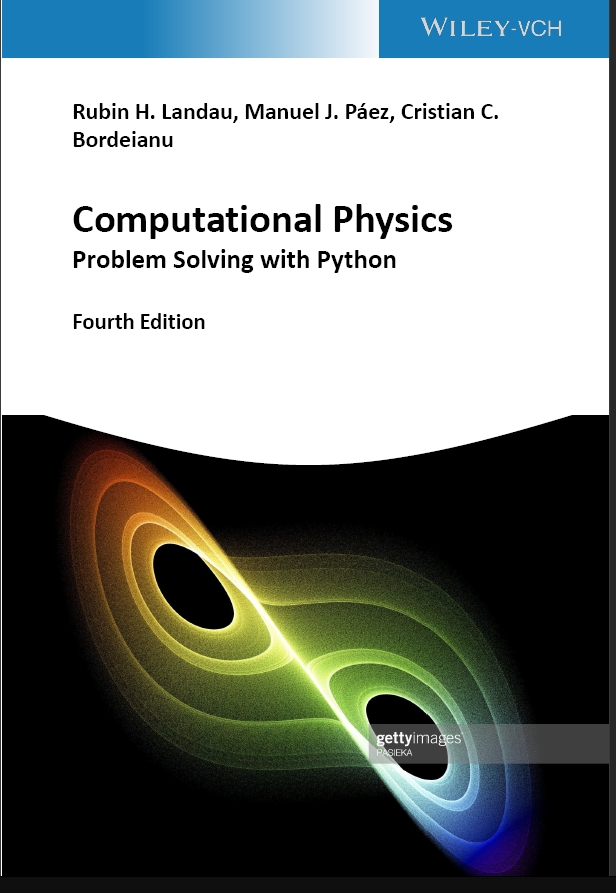
|
Computational Physics 4th
Ed
Problem Solving with Python
Rubin H Landau, Manuel J Paez &
Cristian Bordeianu (D)
With Contributions by GUANGLIANG HE
ISBN: 978-3-527-41425-3
@
Amazon or
Wiley-VCH
New: Quantum Computing, Neural Nets, Machine Learning & AI, General
Relativity, Data Science Emphasis
Back Cover Blurb
© Wiley-VCH 2024
|

Planning
the first edition |
Chapter Titles
| |
|
|
- Part I Basics
- 1. Introduction
- 2. Software Basics (Expanded)
- 3. Errors & Uncertainties
- 4. Monte Carlo Simulations
- 5. Differentiation & Integration
- 6. Trial-and-Error Searching & Data Fitting
- 7. Matrix Computing & N-D Searching
- 8. Differential Equations & Oscillations
- Part II Data Science (Expanded)
- 9. Fourier Analysis
- 10. Wavelet & Principal Components
|
- 11. Neural Networks & Machine Learning (New)
- 12. Quantum Computing (New)
- Part III Applications
- 13. ODE Eigenvales, Scattering, Trajectories
- 14. Fractals & Statistical Growth Models
- 15. Nonlinear Population Dynamics
- 16. Nonlinear Dynamics of Continuous Systems
- 17. Thermodynamic Simulations & Feynman Path Integrals
- 18. Molecular Dynamics Simulations
- 19. General Relativity (New)
- 20 Integral Equations
|
- Part IV PDE Applications
- 21. PDE Review & Electrostatics & Relaxation
- 22. Heat Flow & Leapfrogging
- 23. Strings & Membrane Wabes
- 24. Quantum Packets & EM Waves
- 25. Shock Waves and Solitons
- 26. Fluid Dynamics
- 27. Finite Element Electrostatics
- Appendix
|
About the Subject Matter The text
is designed for a one- or two-semester undergraduate course, or a beginning
graduate course. It surveys most modern
computational physics
topics
from a computational science point of view that emphasises
how physics, mathematics, and computer science are combined to solve problems. The approach is learning by doing, with
problems, exercises, model Python programs, and
visualizations for most every topic. (Codes are also available in other
computer languages.)

